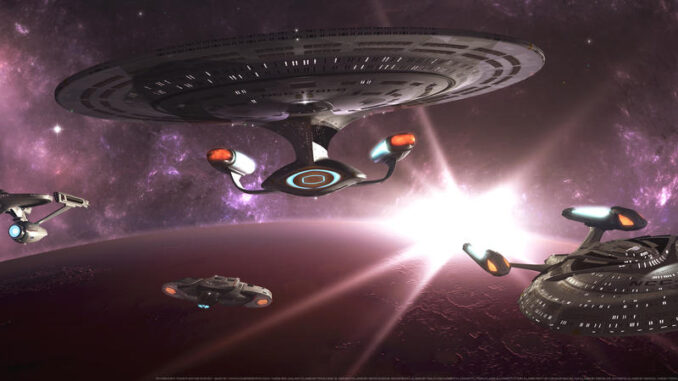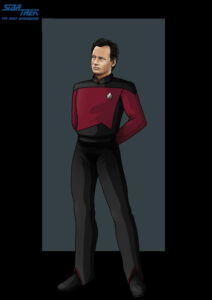
In Star Trek Adventures, the crew rarely acts without amazing assistance. When the Conn Officer navigates asteroids, there are thrusters and engines able to translate the Officer’s movements into perfectly timed maneuvers. When the Chief Engineer adjusts the engines, there is a sophisticated, perfectly-calibrated computer aiding him. Plus, there is an entire room full of highly-trained engineers there to run to the proper stations and make the required adjustments. When the Chief Medical Officer treats a crew member who was nearly torn in twain by a hostile alien life form, the Doctor has the help of a Starfleet Medical staff and treatment beds that show the patient’s vitals. There are specialized computers to analyze blood contagions and show which muscles and bones require mending. Then, there are the surgical devices to perform the treatment.
 The Captain may feel alone sitting in his chair, making the calls that affect the lives of hundreds of crew members, but he can rest assured he has an important ally who is almost always assisting him: his ship.
The Captain may feel alone sitting in his chair, making the calls that affect the lives of hundreds of crew members, but he can rest assured he has an important ally who is almost always assisting him: his ship.
I’m not just talking about the physical hull and engines built by the brightest shipwrights the Federation has to offer, but there are the computers programmed by experts, drawing from a galactic repository of knowledge about science, history, medicine, and engineering. There are crew members who underwent specialized training at Starfleet or Starfleet Medical for engineering, medical or specific fields of sciences. These people have even more specialized tools at their beck and call.
Mechanically speaking, when a crew member makes a roll, it’s not just his innate knowledge of science or his ability to pilot the ship that comes into play. There are the vast resources provided by the ship and crew. The ship usually aids the crew member in his tasks.
If it was a physical crew member aiding, he would make the same roll as the primary crew member, but use 1d20 instead of the 2d20. But a ship and its store of resources is another thing, requiring its own stat sheet, including its own talents.
Instead of Attributes, the ship has Systems. They are: Engines, Computers, Weapons, Structure, Sensors and Communications. Instead of Disciplines there are Departments. They feature: Command, Security, Science, Conn, Engineering and Medicine. The Attributes represent the physical construction of the ship plus its systems. The Departments reflect the pool of talent aboard the ship.
To assist a crew member on his roll, any of the players can roll 1d20 and compare it to a target number comprised of the Systems + Departments.
Say a crew member is beaming the away team to the surface of a planet. The officer would roll Control + Engineering. However, he is also assisted by the ship’s Computers + Engineering. If a Science Officer is scanning a planet, he rolls Control + Science. However, he is also assisted by the ship rolling 1d20 against a target number comprised of Sensors + Science.
The same is true aboard space stations, like Deep Space Nine. The station is as much a character as Captain Sisko or Odo. It is always there to provide support for its valiant crew.
A wonderful aspect of Star Trek Adventures is how it mechanically incorporates the assistance of the ship’s crew and the ship’s resources into every action of its officers.
Like the crew, the ship grows over the course of a campaign. The officers can order the crew to specialize more in a specific Department. Backup computers and stations for engineering are replaced by more laboratories and testing sites for the variety of scientists being brought on board. The ship may be large, but there is finite room. When one Department is improved, another Department is cut back. The Captain must determine his vision for the ship, so when the time comes to alter the stats for it, he is striking a balance that will best suit the crew once they’re in the field.
